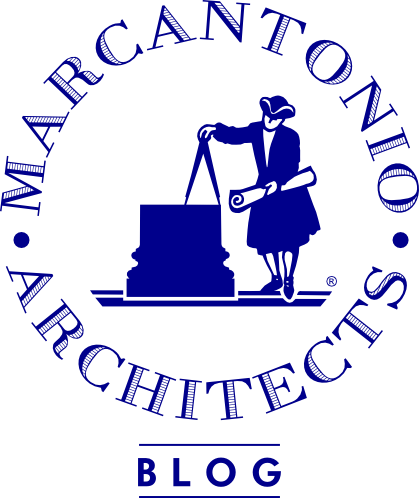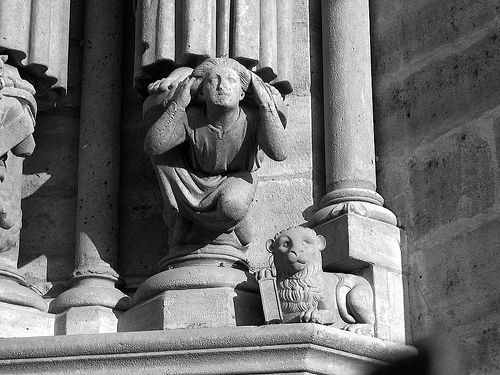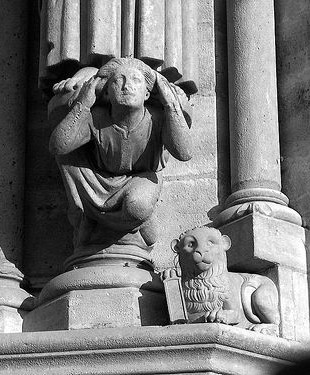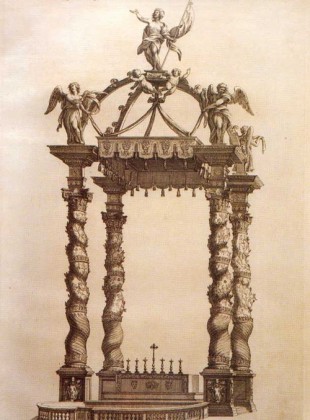We’ve discussed how the church building is an earthly heaven, in particular how all the structural elements seem to be alive. The column capitals are like floral bouquets, the beams sprout leaves and eggs, the heads of animals and men form bosses, etc. There is no death in the Garden of Eden, after all, so it would make no sense to have a column made of a dead tree there. It would make even less sense to imitate the Garden using dead machine iconography. Life must be the primary subject.
We can take the metaphor further. Have you ever noticed how effortless the work of holding things up seems to be for these plants, animals, and people who populate our buildings? The graceful tendrils of the Corinthian capital support a huge load, yet remain uncrushed. The saint carries a section of ceiling, yet his posture suggests no burden. This is not an accidental feature. I would argue that architecture not only imitates the bodies of living things, but in fact, it imitates the glorified bodies of living things.
A “glorified body” is the body one receives in heaven, i.e., the New Eden, after the General Resurrection. St. Thomas Aquinas described seven qualities of the glorified body:
1. Identity: We will retain our original identity; we will be essentially the same persons as before we died. (John 20:11-16)
2. Integrity: We will retain all of the parts of our old bodies – our bodies will be complete. (John 20:24-27)
3. Quality: Our bodies will be youthful and will retain our original gender. (Rev 1:12-18)
4. Impassability: We will be immune from death and pain. (Rev 21:4, I Cor 15:50-57)
5. Subtlety: Our bodies will be free from restraint by matter, yet palpable. (John 20:19-23)
6. Agility: We will have complete freedom of movement, our souls will direct our bodies without hindrance. (Luke 24:15,31,36)
7. Clarity: The glory of our souls will be visible in our bodies. We will be beautiful and radiant. (Rev 4:3, I Cor 15:40)
Is it not clear that architectural elements in their fullest expression, from columns, to entablatures, to vaults, etc., evince all these qualities? Let’s have a look. The first two are fairly obvious. Identity: vegetable, animal, and human forms continue to be perfectly recognizable. Integrity: no parts are omitted from these bodies.
Then the comparison becomes a little more startling. Quality: plants are a sculpted at their most lush, flowers in full bloom, animals in perfect health. Impassibility: plants, animals, and persons do their structural jobs painlessly. Subtlety: architectural motifs often penetrate one another, as though they momentarily occupy the same space. Agility: again, due to “the dominion of the glorified soul over the body,” plants, animals, and persons are physically unhindered and do work far beyond their natural limits. And finally, Clarity: these architectural elements are beautiful, represented in an idealized fashion. The soul seems to shine through the matter.
All this doesn’t just hold true for church buildings, it’s true for all buildings. But since church buildings tend to be the most fully expressive, the analogy is more evident in them. Something to keep in mind the next time you walk into a beautiful room and think “Glorious!”





